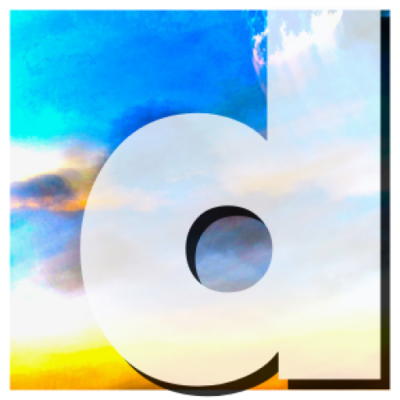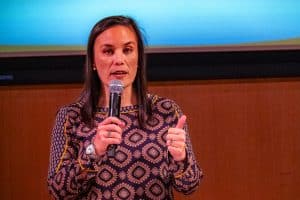
In Texas, daytime and nighttime temperatures are going up. Humidity is rising too, compounding the threat to the public health. But efforts to prevent heat illness—and heat-related deaths, in particular— aren’t keeping pace.
“People are living with 100 degree temperatures in their homes, especially seniors who have nowhere to go and have to determine if they are going to pay for food or electricity,” said Nancy Parrilla, who helps lead climate resilience efforts out of the nonprofit Fuerza Unida on San Antonio’s South Side. “It’s not a pretty picture but it’s a picture we have to acknowledge.”
San Antonio is not unlike many cities and counties across Texas that don’t track such deaths in spite of rising temperatures and the amplification that heat in cities due to heat-absorbing concrete and reduced tree canopies.
After years of reports about unhoused neighbors expiring in some of the city’s hottest corners—likely directly due to the heat—two City Council members decided to act.
In April, D5’s Teri Castillo and D2’s Jalen McKee-Rodriguez filed a Council Consideration Request, or CCR. It called on the San Antonio Metropolitan Health District to start tracking heat-related deaths via “an intergovernmental collaborative effort with the Bexar County Medical Examiner’s Office, City and County public safety departments, and local hospitals.”
Then…crickets.
Although the effort had the support of half of those on Council at the time, Mayor Ron Nirenberg, in the final months of his last term, failed to advance the measure to the Governance Committee for discussion. Then this summer a new mayor came on board. And Mayor Gina Ortiz Jones didn’t like the way CCRs were being processed. She challenged the longstanding practice, demanding CCRs first be reviewed by staff within the offices of the city attorney and city manager to make sure they comport with existing federal and state laws.
Related: “MAP: San Antonio’s Hottest Neighborhoods (Yes, Literally)”
It appears both sides have dug in on the conflict. And as we are learning, power politics and good policies don’t always flock together. On Thursday, September 11, 2025, San Antonio’s City Council unanimously passed animal welfare legislation over the objections of the mayor and leaders in the animal welfare community.
Animal advocates warned the proposal, originally built on the back of a CCR specifically about guinea peafowl by D7 Councilmember Marina Alderete Gavito, largely duplicates existing laws. Worse, they said, by linking city code around animal dumping to the initial offense of “trapping” animals, the proposed legislation put individuals involved in animal rescue at risk of being cited themselves. That could put a chilling effect on would-be rescuers.
“What about catching a raccoon and letting them go?” John Bachman, a longtime animal-rights advocate, wrote Deceleration. “There’s so many questions. Just the fact of that possible punishment would inhibit people from feeding animals or trying to save animals.”
Ultimately voting against a unanimous City Council, Mayor Jones urged first a delay to better vet the proposal with the public. In an echo of an earlier mayoral caution, that of the wisdom of kicking off negotiations for a new $1.3B Spurs stadium without an independent financial assessment (See: “No Spurs No”), she was again overwhelmed by Council.
As reported by Megan Rodriguez at The San Antonio Express-News, it was only after last week’s vote that it became clear that some on Council weren’t sure what they were approving. Councilmember Phyllis Viagran, for instance, expressed regrets for that lack of clarity informing her vote but blamed the Council’s actions on a frustration with Mayor Jones’s clampdown on their ability to bring the concerns of constituents to the full council.

While Gavito was able to steer her CCR on peafowl (ie. peacocks and peahens) forward under Mayor Nirenberg, but ultimately to a broader application (and what many animal advocates see as a less-than-ideal result). A number of other previously filed CCRs appear to be stranded in a standoff between Council members and the mayor. This Thursday, Council will discuss CCR practices, a conversation prompted by a request from Castillo, Gavito, D9’s Misty Spears, and D10’s Marc Whyte.
“[T]he Ordinance is silent with respect to any difference in the…CCR process after a new Council takes office,” the group’s memo states. “As such, CCR’s filed or in the committee process when a new Council takes over should be treated no differently than what is outlined in the Ordinance.”
The heat deaths CCR, for instance, enjoyed support from Viagran and D1’s Sukh Kaur, although the third required signatory—former D6 rep Melissa Cabello Havrda—since resigned to seek the mayor’s seat in the last election cycle.
Justin Renteria, director of policy at Councilmember Castillo’s office, said the hope is that the Thursday discussion will resolve the matter once and for all. With Council support, he said, the April CCR should soon be headed to the Governance Committee and, ideally, after that, toward public deliberation within the Public Health & Equity Committee. Repeated calls to Mayor Jones’s office from Deceleration over the last two weeks seeking comment have not been returned.
But at Fuerza Unida, a project advancing with support from the City to realize a green corridor through a section of town better known for ubiquitous auto salvage and scrap metal yards, will advance with or without City support, Parrilla said.
It’s a difficult moment, as community efforts to cool homes and streets here were defunded in this year’s city budget alongside programs like the Climate Ready Neighborhoods that Deceleration wrote about last week. While the efforts will continue due to fiscal 2025 dollars held by the Office of Sustainability being carried forward into 2026, Parrilla said the project from the beginning was about deepening community power and ownership. (More on this next week.)

The result of Council’s frustration, if that is what contributed to that unanimous vote against Mayor Jones’s caution, was widely panned by animal advocates in San Antonio.
“ACS is claiming that rescuers are good Samaritans and won’t be targeted, but since it’s not in the ordinance, there are zero protections,” a representative of No Kill San Antonio wrote Deceleration.
“This amendment is so poorly written that it actually makes it more difficult to prosecute animal abandonment cases,” longtime rescuer Kelly Reid Walls told Council before the vote.
The reason for that, Bachman suggested on Facebook, was the lack of any dedicated public hearings intended to engage the community that knows the issues best.
“This item was always just about Peafowl and nowhere in public hearings or committee hearings was expanding it to all animals ever mentioned,” Bachman wrote on Facebook. “It should be withdrawn and put through normal procedures including public hearings, stakeholder meetings and committee hearings.”
And that had been, essentially, the mayor’s position all along—thought caught up in this deeper dispute about process.
Now the rescue community is calling on Council to revisit the code update. No Kill San Antonio wrote Deceleration: “We encourage council to consider writing an ordinance amendment that clarifies the elements that constitute animal abandonment and provides for affirmative defenses for rescuers and Good Samaritans.”


